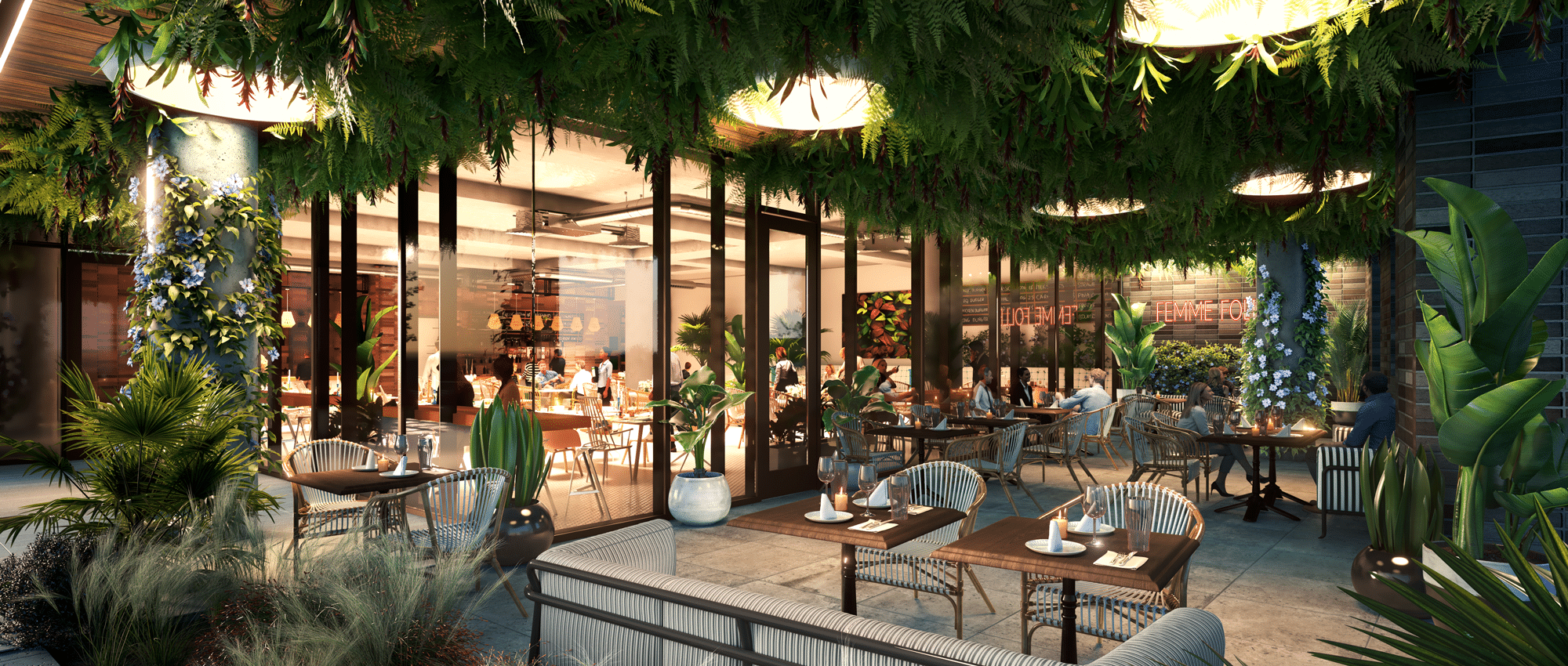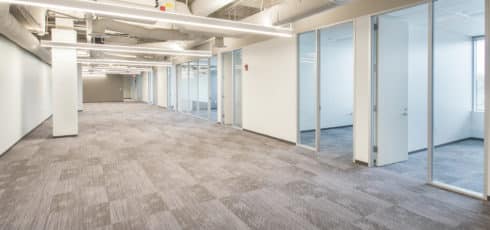Renderings are an essential tool for property marketing. Renderings can help convey the look, feel, and functionality of a development project in a way that blueprints and technical drawings cannot.
However, with so many types of renderings available, it can be difficult to determine which ones are necessary for your specific project. This article will provide an overview of the different types of renderings commonly used in development projects and help you determine which ones will best serve your needs.
Read Next: Six Things to Consider When Creating Renderings for Your Commercial Property
Still Renderings
A still rendering is exactly what it sounds like – a 3D computer-generated image of an object or environment that is presented as a still image. There are typically two different types of still renderings – basic and detailed. Which one you need for your property will depend on your budget and the project’s complexity.
Basic Still Rendering
A basic still rendering is a 3D visualization of a building or interior space that is a still image. It is a computer-generated image that shows the finished project from a specific angle and perspective. Basic still renderings can be used to give potential tenants an idea of what a building or interior space will or could look like.
These images can be customized to show different finishes, lighting, and other details. They are typically created using computer-aided design (CAD) software and can be produced quickly and cost-effectively.
While basic still renderings may not offer the same level of detail or interactivity as other types of renderings, they are a useful tool for presenting a clear and realistic visual representation of a development project.
Do you need to show how the building fits in with its surroundings? An aerial rendering may be a good fit for your property.
Is It a Good Fit?
These types of renderings are typically used for industrial buildings and smaller office buildings with limited budgets.
Examples of Basic Still Renderings
Detailed Still Rendering
A detailed still rendering is exactly like a basic still rendering but with a higher level of detail. These types of renderings are typically used when a high degree of realism is required to accurately showcase the design.
Detailed still renderings can include intricate textures, realistic lighting, and fine details such as furniture, plants, landscaping, and people to create a sense of scale and context.
Creating detailed still renderings can be a time-consuming process and requires specialized skills and software, but the result is a powerful visualization tool that can help to bring designs to life and drive sales.
Is It a Good Fit?
These types of renderings are typically used for new office developments.
Examples of Detailed Still Rendering
Video Renderings
A video rendering is a type of marketing video or clip that uses 3D computer-generated imagery to showcase a property. These videos typically include exterior shots of the building, interior views of the lobby and other common areas as well as footage of individual office spaces.
Video renderings can be highly detailed and realistic, with realistic lighting and textures, and can be customized to show different options for finishes and fixtures. They may also include voiceover narration, music, and other visual effects to create a compelling and engaging presentation. The designer may also incorporate other visual elements, such as 3D models, animations, and special effects, to create a more immersive and interactive experience.
Video rendering typically feature fluid camera movements, which can include panning, zooming, and tracking shots that give viewers a sense of the space and the environment.
Creating a commercial real estate video rendering requires specialized software and skills, as well as access to architectural plans and other design materials.
Is It a Good Fit?
These renderings are typically used for new, large office developments with a large budget.
Examples of Video Renderings with Full Movement
Below, you can see a compilation of video renderings for Alto created by COOP.
Virtual Tour Renderings
A virtual tour rendering is a type of video or group of still images that showcases a development or space. Virtual tour renderings are often used to showcase properties to prospective tenants who may not have the opportunity to visit the property in person.
A video virtual tour rendering combines the features of a virtual tour with the added benefits of motion graphics, music, and sound effects. The virtual tour rendering video can incorporate a range of visual elements such as 3D models, animations, and special effects to create an immersive and interactive experience for viewers.
A virtual tour that consists of various still renderings can also be highly engaging. These types of virtual tours let prospective tenants explore the space at their leisure before it is even built. These are typically presented as 360-degree virtual reality images to show an entire space.
Virtual tour renderings can provide a more engaging and informative experience than traditional photos or videos, as they allow viewers to explore the space from various angles. They can also help to create a sense of excitement and anticipation about the property, which can help to attract and retain prospective tenants.
Is It a Good Fit?
These types of renderings are typically used for new, large office developments with a large budget.
Examples of Virtual Tour Renderings
This Spacewalk virtual tour, created for Perennial by TMRW, provides a truly dynamic experience with a walkthrough that includes 360-degree views, sounds, and more.
Below, you can see a more traditional 360-degree virtual tour created for Alto by COOP.
This final example features a flythrough rendering of Preserve at 620 created by Carson Design.
Pricing
The cost of a rendering or video rendering can vary depending on a number of factors such as the complexity of the project, the quality of the rendering, the level of detail required, and the experience and location of the rendering provider.
A basic still rendering can cost anywhere from a few hundred to several thousand dollars and a detailed still rendering for a building can cost anywhere from a few thousand to tens of thousands of dollars. A video rendering or virtual tour rendering of an office development can cost anywhere from several thousand to tens of thousands of dollars.
It’s important to note that these are just estimates and the actual cost can vary significantly based on the specific project requirements.
An expert leasing and marketing team can help you find a more accurate quote based on your project specifications.
Conclusion
The specific types of renderings you need for your development project will depend on the project’s goals, requirements, and intended audience. It’s best to consult with your leasing firm’s marketing team to determine the best types of renderings for your specific project.
Are you looking for more information on renderings and other property marketing initiatives? Read our Ultimate Guide to Commercial Real Estate Marketing.
Ready to talk more in-depth about your property marketing strategy? Schedule a free consultation with our project leasing team today.














